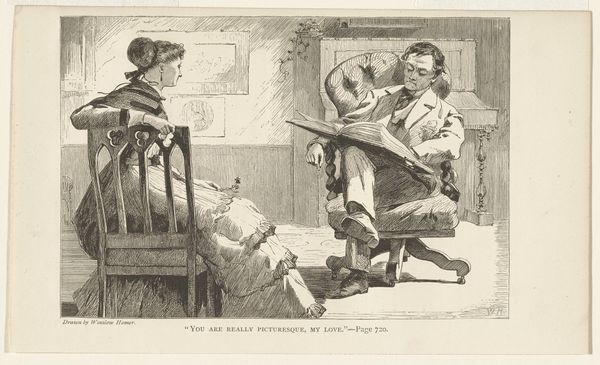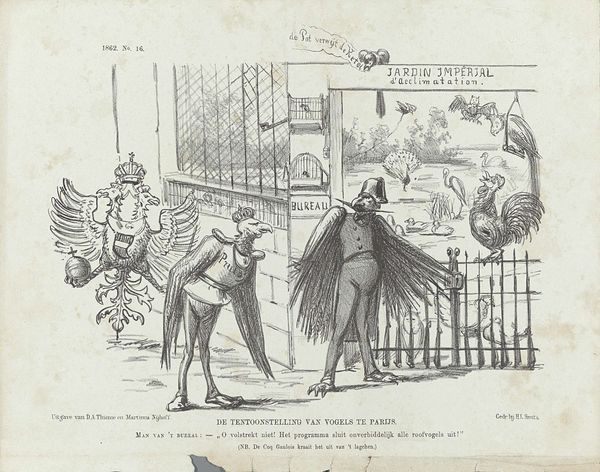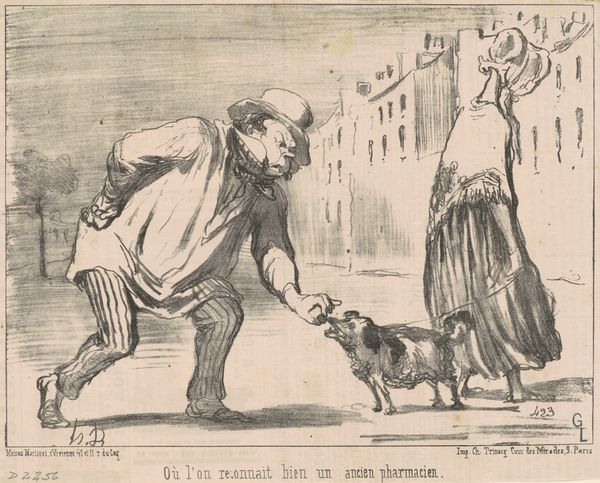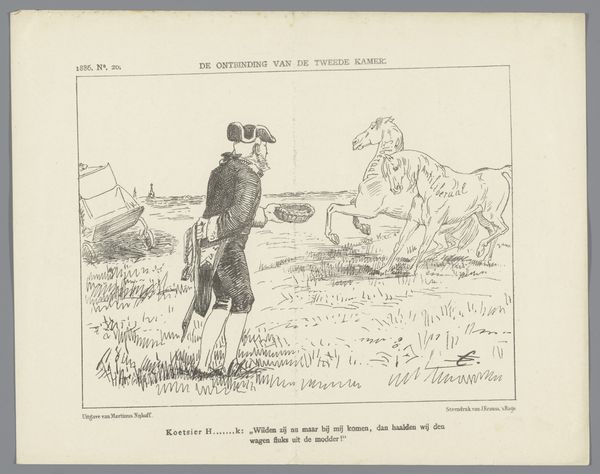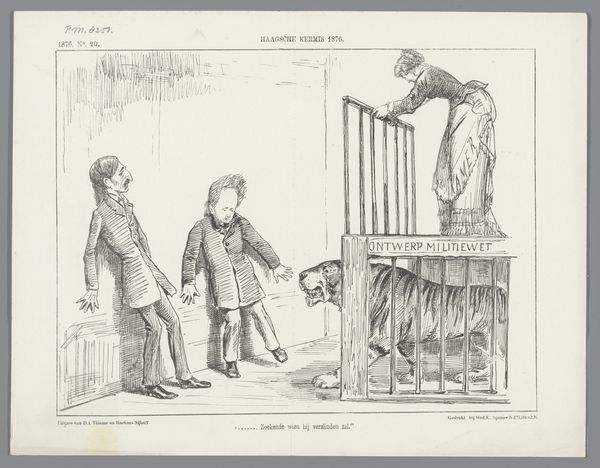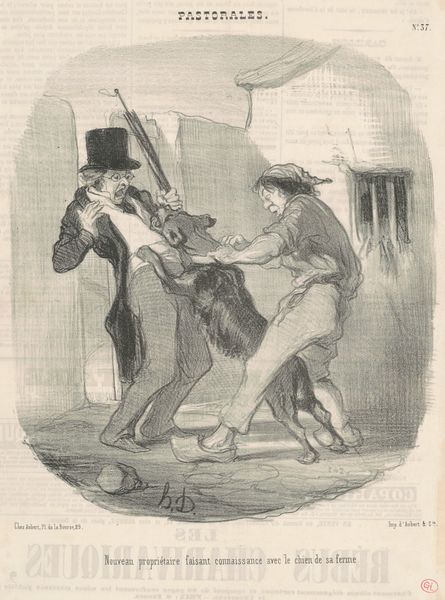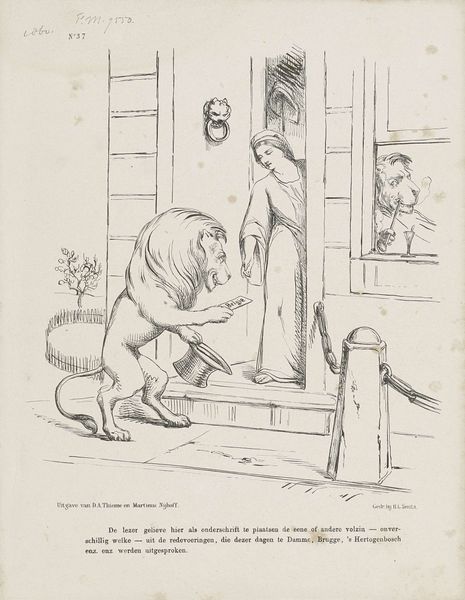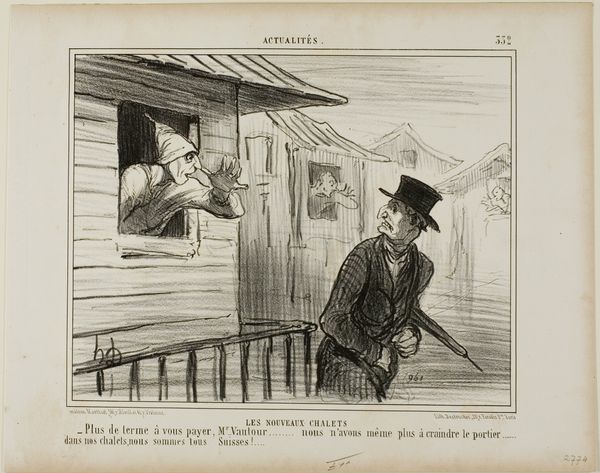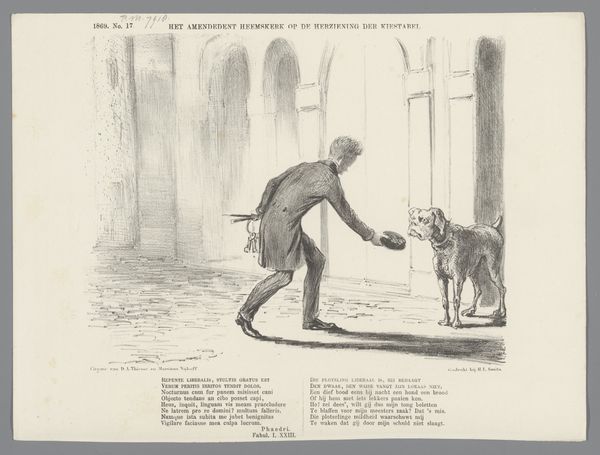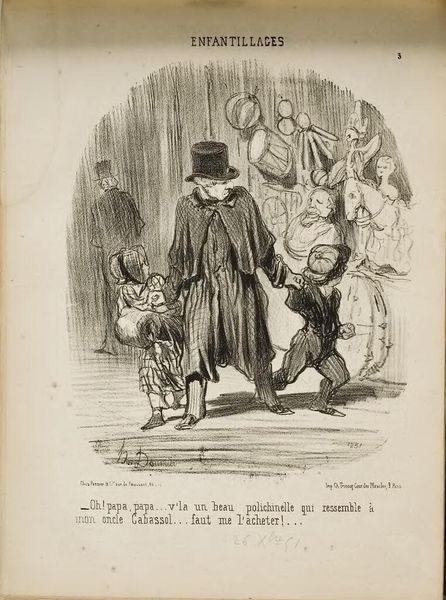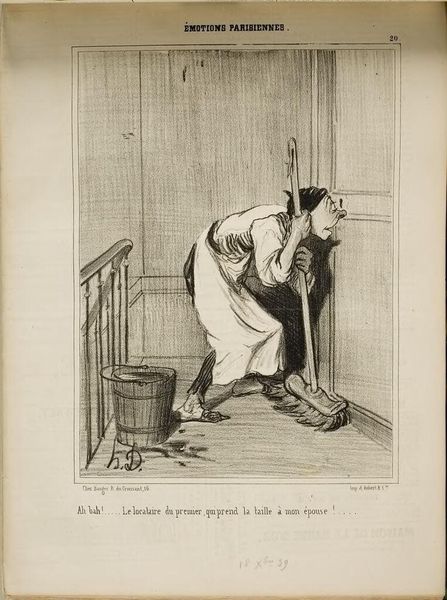
drawing, print, ink, pen
#
drawing
#
comic strip sketch
#
quirky sketch
# print
#
caricature
#
personal sketchbook
#
ink
#
idea generation sketch
#
sketchwork
#
pen-ink sketch
#
comic
#
sketchbook drawing
#
pen
#
storyboard and sketchbook work
#
sketchbook art
#
initial sketch
Dimensions: height 215 mm, width 275 mm
Copyright: Rijks Museum: Open Domain
Curator: I’m struck immediately by the immediacy of this image. It feels rough, like a quickly executed sketch rather than a polished print. Editor: Indeed. Here we have "Spotprent op Keuchenius die de kat de bel aanbindt, 1866" - or roughly translated "Cartoon on Keuchenius who makes the cat bell," made in 1866 by Johan Michaël Schmidt Crans, using pen, ink, and printmaking techniques. Its creation process gives it a distinctive character. Notice the layering of lines. Curator: The most potent symbolic gesture, I think, is that of a man trying to tie a bell around the neck of a reluctant cat. There is a visual interplay there between a powerful man forcing action onto an animal to make change. Do we know what bell represented? Editor: In 1866, there was intense public debate regarding parliamentary reform in the Netherlands. This print shows a caricatured depiction of politician Groen van Prinsterer attempting to get a cat to wear a bell with the words "secrete onbindings vrees" suggesting fears related to secret dissolution were current and debated.. The setting is likely the Dutch parliament and Schmidt Crans uses inexpensive, accessible print methods to communicate on this timely issue to the popular audience of the time. Curator: Look how that translates! The artist uses common symbols to create instant association. The man and the cat aren’t just themselves; they are figures in a story that most people understood immediately. Who is he trying to trick? The figures in the rafters or on the wall in the drawing? Editor: It’s intriguing how this cartoon harnesses the relatively inexpensive printmaking to be an essential form of early political commentary for distribution in newspapers, to rapidly shape or sway public opinion. The quality of the sketch gives immediacy to the politics on display in 1866! Curator: Precisely. So we can also reflect how the artist chose these symbols of an attempt to "bell the cat," how to do an impossible task, in the visual context of a current debate for parliamentary transparency! Very clever. Editor: Understanding its construction and cultural context makes it that much more impactful. Curator: For me too. It makes you think about visual symbols today as potent forms of storytelling about labour, fear, and access.
Comments
No comments
Be the first to comment and join the conversation on the ultimate creative platform.
